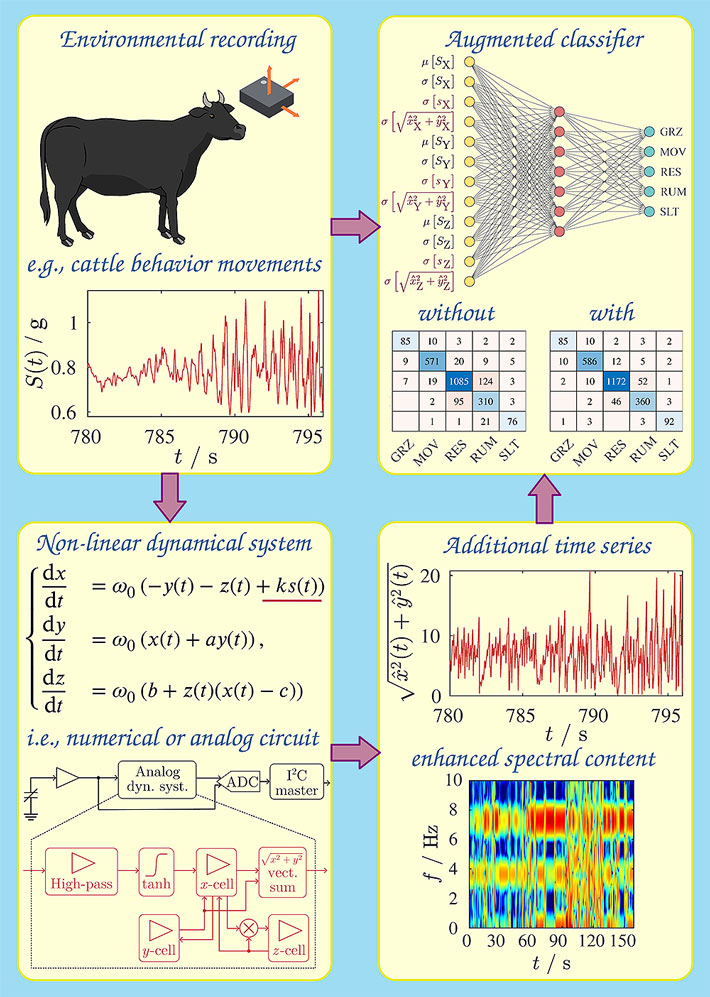References
[1] Li C, Tokgoz KK, Fukawa M, Bartels J, Ohashi T, Takeda K, Ito H, Data Augmentation for Inertial Sensor Data in CNNs for Cattle Behavior Classification, IEEE Sensors Letters, vol. 5, no. 11, pp. 1-4, 2021, DOI: 10.1109/LSENS.2021.3119056
[2] Li C, Minati L, Tokgoz KK, Fukawa M, Bartels J, A S, Takeda K, Ito H, Integrated Data Augmentation for Accelerometer Time Series in Behavior Recognition: Roles of Sampling, Balancing and Fourier Surrogates, IEEE Sensors Journal, 2022, DOI: 10.1109/JSEN.2022.3219594
[3] Minati L, Koike Y, Yoshimura N. Brain-computer interface system suitable for synchronizing one or more nonlinear dynamical systems with the brain activity of a person, patent application WO2021019776A1, priority to PCT/JP2019/030295, https://patents.google.com/patent/WO2021019776A1
[4] Minati L, Ito H, Perinelli A, Ricci L, Faes L, Yoshimura N, Koike Y, Frasca M, Connectivity influences on nonlinear dynamics in weakly-synchronized networks: insights from Rössler systems, electronic chaotic oscillators, model and biological neurons, IEEE Access, vol. 7, pp. 174793-174821, 2019, DOI: 10.1109/ACCESS.2019.2957014
[5] Minati L, Bartels J, Li C, Frasca M, Ito H, Synchronization phenomena in dual-transistor spiking oscillators realized experimentally towards physical reservoirs, Chaos, Solitons and Fractals, vol. 162, art. 112415, 2022, DOI: 10.1016/j.chaos.2022.112415
[6] Minati L, Frasca M, Yoshimura N, Ricci L, Oswiecimka P, Koike Y, Masu K, Ito H, Current-Starved Cross-Coupled CMOS Inverter Rings as Versatile Generators of Chaotic and Neural-Like Dynamics Over Multiple Frequency Decades, IEEE Access, vol. 7, pp. 54638-54657, 2019, DOI: 10.1109/ACCESS.2019.2912903
[7] Minati L, Li C, Bartels J, Chakraborty P, Li Z, Yoshimura N, Frasca M, Ito H, Accelerometer time series augmentation through externally driving a non-linear dynamical system, Chaos, Solitons and Fractals, vol. 168, art. 113100, 2023, DOI: 10.1016/j.chaos.2023.113100
. Any information published on this site will be valid in relation to Science Tokyo.



